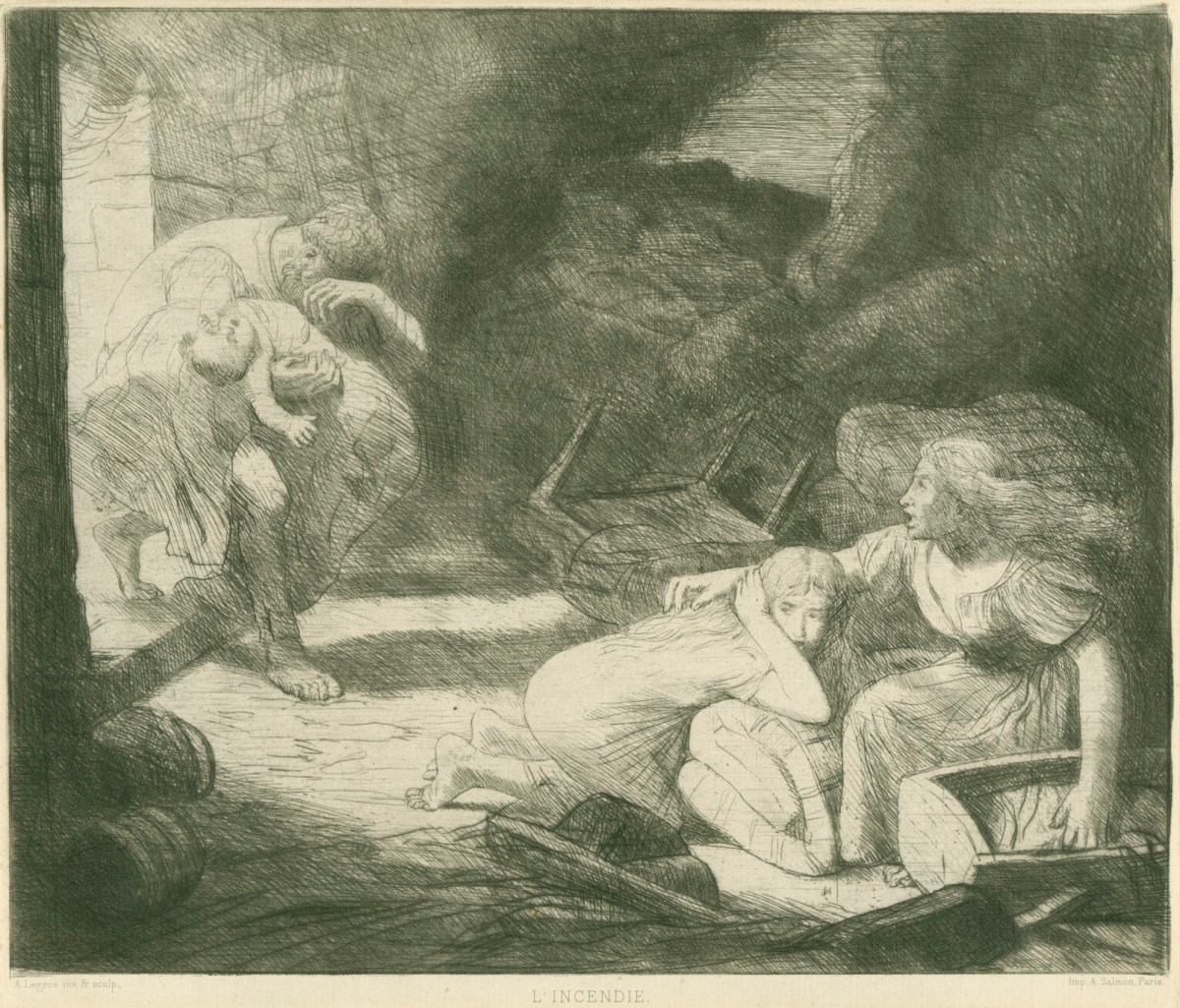
Alphonse Legros, L'Incendie, published 15 October 1876.
Etching with drypoint. 225 mm x 268 mm. © Photo: Royal Academy of Arts, London.
This image is not available to download. To licence this image for commercial purposes, contact our Picture Library at picturelibrary@royalacademy.org.uk
L'Incendie, published 15 October 1876
Alphonse Legros (1837 - 1911)
RA Collection: Art
This etching depicts a man carrying a baby from a burning building, his arm covering his face from the smoke. To the right of the composition a woman and girl are crouching, the woman's hand in an empty cot as she looks towards the man and baby and the girl turned away, covering her head. Items of furniture are scattered on the ground and plumes of smoke rise up in the background. Like Fin - La veuve et l'orpheline (03/2011), this print shows the disaster wrought by fire.
The draughtsman, printmaker and painter, Alphonse Legros, was born in Dijon, France in 1837. He studied in Paris where he met Henri de Fantin-Latour and James Abbott McNeill Whistler, with whom he shared a dedication to the realist work of Gustave Courbet as well as a commitment to etching (particularly in the case of Legros and Whistler). Together they formed the Société des Trois.
Whistler first took Legros to London in 1861 and he soon moved there and began regularly exhibiting at such galleries as the Royal Academy. In 1876 he became professor at the Slade School of Fine Art where he emphasised good draughtsmanship (he left in 1893). Legros became a naturalised British citizen in 1880 and that year he was also a founder-member of the Society of Painter-Etchers.
The theme of death is prevalent in Legros's work. He was inspired by artists such as Albrecht Dürer and Hans Holbein to produce two series of etchings on the macabre theme, Death and the Woodcutter (ca. 1875–1906) and The Triumph of Death (ca. 1892–1900).
The British Museum holds a number of versions of this print, most with slight variations; the most closely related is 1877,0210.602, which has the same details of publication.
The work is one of several by Legros that Carel Weight RA owned, three of which were left to the Royal Academy as part of his bequest (the current work, 03/2011 and 12/112).
Object details
225 mm x 268 mm
Start exploring the RA Collection
- Explore art works, paint-smeared palettes, scribbled letters and more...
- Artists and architects have run the RA for 250 years.
Our Collection is a record of them.



